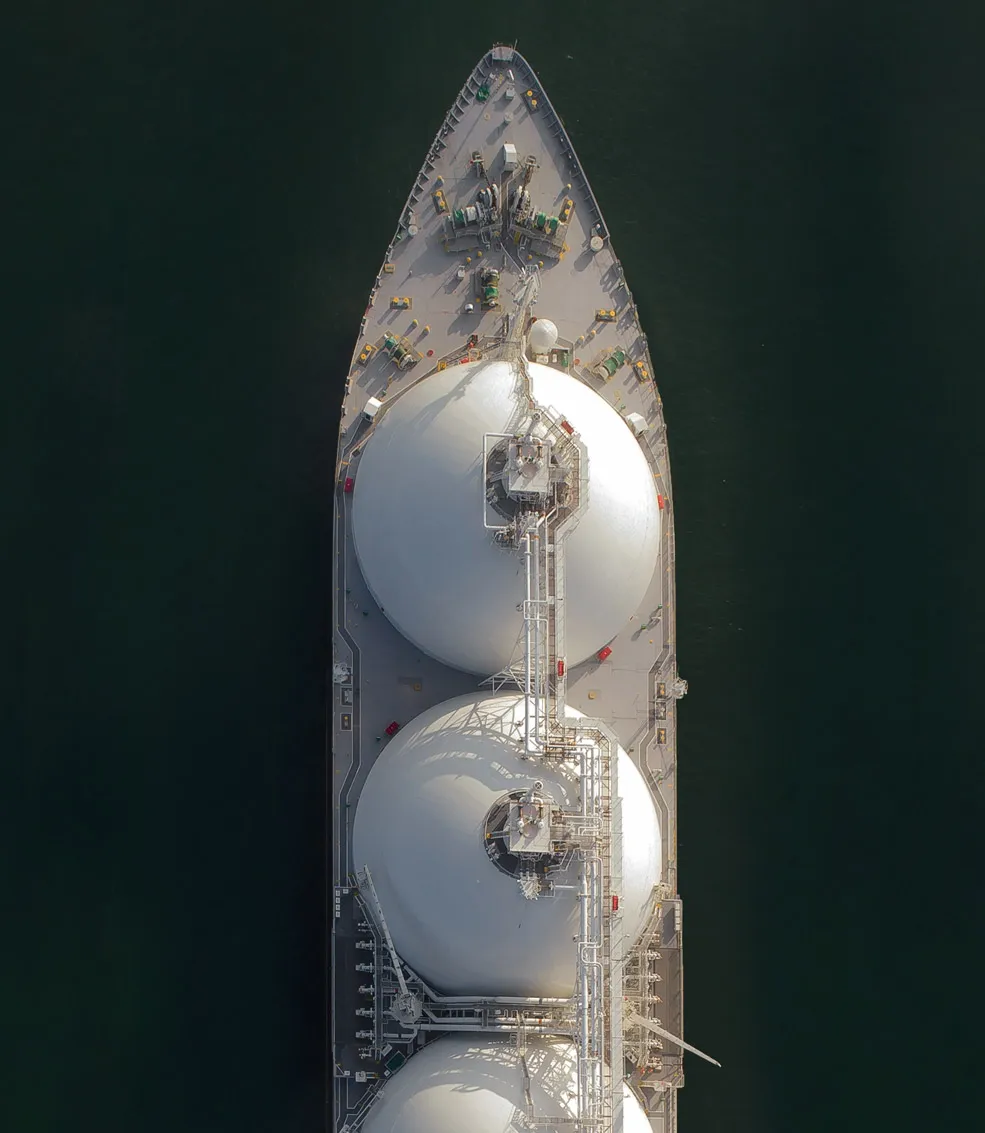MRV and DCS: On track for greener shipping
Monitoring fuel consumption and CO2 emissions is the first step towards significantly reducing greenhouse gas emissions from ships. DNV GL helps shipowners and operators comply with new EU and IMO requirements for energy efficiency management
Just a few days before the landmark International Maritime Organization (IMO) London conference, the chances of an agreement to control shipping’s greenhouse gas (GHG) emissions looked unlikely. But then, ironically on Friday 13 April, the members of the Maritime Environment Protection Committee (MEPC) reached a consensus: by 2050 shipping would cut its GHG emissions by at least 50 per cent from 2008 levels. This was the first time emission targets were set for global ocean shipping.
Commercial shipping is getting greener. Both the EU and the IMO are committed to reducing noxious maritime emissions. However, to get a reliable data basis about climate-affecting exhaust gases, a legally binding framework must be established to collect and evaluate relevant information. To that end the EU, and shortly thereafter the IMO, implemented two similar albeit separate regimes: the EU’s Monitoring, Reporting and Verification (MRV) of CO2 Emissions regulation ((EU) 2015/757), and the IMO’s Data collecting system on fuel consumption of ships (DCS).

Streamlined reporting service
The primary goal of both regulatory frameworks is to monitor maritime fuel consumption and CO2 emissions. The aggregated information may eventually be used to cut emissions through a fee scheme, such as emission certificate trading. The EU MRV focuses on ships entering or leaving European ports, whereas the IMO system covers emissions from global shipping.
Implementing these regulations is technically complex. DNV GL stands ready to support owners and operators as a reliable and competent partner in both roles: as an accredited verifier for the EU MRV system or as a Recognized Organization (RO) authorized to verify compliance with the IMO DCS on behalf of several flag states. As Sven Dudszus, Head of Section EU Product Certification at DNV GL – Maritime, points out, “DNV GL offers its verification service independently from a ship’s classification society to make the process as smooth as possible. For practical purposes we recommend using the same verifier for EU MRV and IMO DCS. If a customer uses another class society for statutory certificates, the flag must accept that another RO is used for DCS.”
In effect since 31 August of last year, the MRV regulation requires shipowners to submit a Monitoring Plan, a complete and transparent description of the method used to determine the CO2 emissions of each vessel from 5,000 GT upwards, similar to the IMO scheme. “All in all some 10,000 ships with continuous EU trades are subject to the EU MRV,” says Dudszus. DNV GL has prepared roughly 50 per cent of these documents to date. “This is a great mark of confidence on the part of our customers who benefit from the fact that we are the only verifier in the market to offer the plan review and the emission report for a specified time period as a single-package solution.”


Ensuring data integrity
The first MRV reporting period started at the beginning of this year. The aggregated ship emission and efficiency data will be published by the EC every year, starting on 30 June 2019. The IMO DCS process will be launched in January 2019. By that time every ship must present proof of the applied method; the IMO stipulates an updated SEEMP, Part II. The RO or flag state will issue annual DCS statements of compliance to shipowners by 31 May.
DNV GL will provide an electronic reporting form through the My Services customer portal in Veracity. Customers can then submit the completed form to DNV GL for approval of SEEMP Part II. To minimize the effort involved in the reporting process for shipowners and operators, DNV GL covers both the EU MRV and the IMO DCS processes in one tool. Single-source data verification for both annual emission reports is the most common-sense approach, especially for vessels operating on both European and non-European global trades, or changing their region of deployment. Ships can use existing infrastructure on board to capture some of the required information, such as fuel consumption data which is routinely collected anyway.
Data plausibility is checked in a fully digitalized process, making sure the content and reporting parameters comply with the EU and IMO rules and requirements. Data integrity is of the essence. Since many performance and status data points cannot be read electronically but must be logged manually, errors can occur. DNV GL provides specialized tools to help customers check the information prior to transmission.
Defining an interface is all that needs to be done to enable transfer of the data. “We have appointed an Interface Manager who will assist customers in implementing an effective reporting system upon request,” says Dudszus. The choice is between automated system-to-system data uploads or manual transmission of fuel consumption data. DNV GL customers subscribing to the ECO Insight service are already covered for their MRV and DCS reporting duties.
DNV GL recommends customers to report their data throughout the year instead of filing a cumulative report at year’s end. This will allow DNV GL to perform continuous data quality checks so that by the end of the year all data have been screened for completeness and plausibility
Operators can upload the annual emission report to the EMSA THETIS database stipulated by the EU, which will be verified by DNV GL. The DCS data will be uploaded to the IMO database either by DNV GL as a designated RO or by the flag state.
DNV GL verifies the data received, whether overall fuel consumption data, log abstracts or fuel balance details (e.g. bunker delivery notes), in an automated process, avoiding time-consuming visits at the ship manager’s office for verification or physical documentation. “Our processes will be optimized continuously. Working closely with our customers we will provide the smartest solution in the market,” says Dudszus.
Contact us

